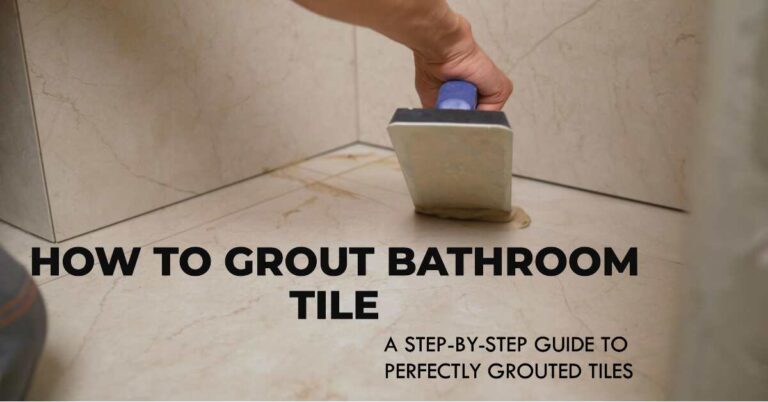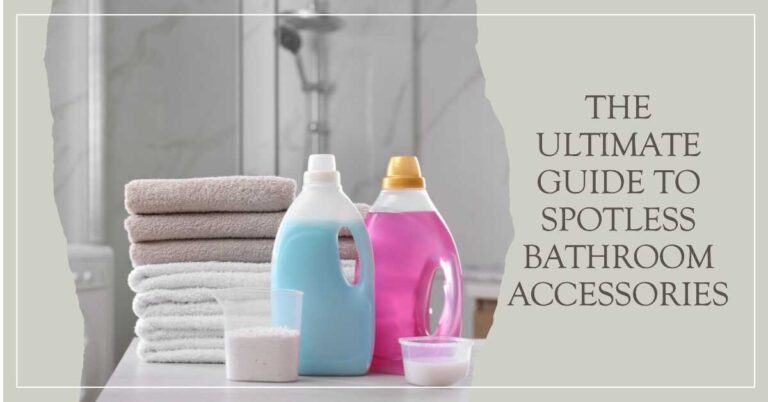Bathroom cleaner is a product that many people use to keep their bathrooms sparkling and germ-free. But have you ever wondered if bathroom cleaner is a hazardous material? Could it harm your health or the environment if you use it incorrectly or excessively? In this article, we will answer these questions and give you some tips on how to use bathroom cleaners safely and effectively.
What is Bathroom Cleaner?
Bathroom cleaner is a general term for any product designed to clean various surfaces and fixtures in the bathroom, such as tiles, sinks, toilets, showers, bathtubs, and faucets. Many types of bathroom cleaners are available in the market, such as liquids, sprays, gels, powders, wipes, and tablets. Some bathroom cleaners are multipurpose, meaning they can be used on different surfaces and for different purposes. Others are specialized, meaning they are formulated for specific tasks or materials.
Bathroom cleaners usually contain one or more active ingredients that help to remove dirt, stains, soap scum, mold, mildew, bacteria, viruses, and other contaminants from the bathroom. Some of the common active ingredients in bathroom cleaners are:
- Bleach: Bleach is a chemical compound that contains chlorine or sodium hypochlorite. It is a powerful disinfectant and whitener that can kill germs and remove stains. However, bleach can also be corrosive and irritate the skin, eyes, nose, and throat. Bleach can also react with other chemicals and produce toxic gases.
- Ammonia: Ammonia is a chemical compound that contains nitrogen and hydrogen. It is a strong cleaner and degreaser that can dissolve grease and dirt. However, ammonia can also be irritating and harmful to the respiratory system and mucous membranes. Ammonia can also react with bleach and produce toxic gases.
- Acids: Acids are substances with low pH and can donate hydrogen ions. Some examples of acids used in bathroom cleaners are citric acid, acetic acid (vinegar), phosphoric acid, hydrochloric acid (muriatic acid), and sulfamic acid. Acids can help to dissolve mineral deposits, rust, lime scale, and soap scum. However, acids can also be corrosive and damage the skin, eyes, teeth, and metal surfaces. Acids can also react with bases and produce heat and gas.
- Bases: Bases are substances with high pH and can accept hydrogen ions. Some examples of bases used in bathroom cleaners are sodium hydroxide (lye), potassium hydroxide (caustic potash), sodium carbonate (washing soda), sodium bicarbonate (baking soda), and borax. Bases can help to neutralize odors, soften water, and remove stains. However, bases can also be corrosive and burn the skin, eyes, mouth, and throat. Bases can also react with acids and produce heat and gas.
- Surfactants: Surfactants reduce the surface tension of water and help lift and remove dirt and grease from surfaces. Surfactants can be classified into anionic (negative charge), cationic (positive charge), nonionic (no charge), or amphoteric (both positive and negative charge). Surfactants can help improve bathroom cleaners’ cleaning performance by increasing their wetting ability, foaming action, emulsifying power, dispersing ability, and solubilizing capacity. However, surfactants can also irritate the skin and eyes and cause allergic reactions in some people.
- Enzymes: Enzymes are biological molecules that catalyze chemical reactions. Enzymes can help to break down organic matter such as proteins, fats, starches, cellulose, and urine into simpler substances that are easier to remove. Enzymes can help to eliminate odors, stains, and biofilms from bathroom surfaces. However, the bathroom cleaner can also deactivate enzymes by high temperatures, pH levels, or other chemicals.
Is Bathroom Cleaner a Hazardous Material?
According to the U.S. Environmental Protection Agency (EPA), a hazardous material is any substance or mixture of substances that threatens human health or the environment when improperly stored, handled, transported, or disposed of ¹. A hazardous material may have one or more of the following characteristics:
- Ignitable: A substance that can catch fire easily or spontaneously under normal conditions or exposure to heat or flame.
- Corrosive: A substance that can cause visible destruction or irreversible damage to living tissue or metal by chemical action.
- Reactive: A substance that can undergo violent or explosive chemical reactions with water, air, or other substances.
- Toxic: A substance that can cause injury or death when ingested, inhaled, absorbed through the skin, or injected into the body.
Based on these criteria, some bathroom cleaners may be considered hazardous materials because they contain ignitable, corrosive, reactive, or toxic ingredients. For example, bleach is an ignitable and corrosive substance that can react with ammonia and produce toxic gases. Hydrochloric acid is a corrosive and toxic substance that can burn the skin and eyes and damage the respiratory system. Sodium hydroxide is a corrosive and reactive substance that can cause severe burns and generate heat and gas when mixed with water or acids.
However, not all bathroom cleaners are hazardous materials. Some bathroom cleaners are made from natural or plant-based ingredients that are biodegradable and non-toxic. For example, vinegar is a mild acid that can help to remove lime scale and disinfect surfaces. Baking soda is a mild base that can help to deodorize and whiten surfaces. Lemon juice is a natural citric acid source that can help dissolve soap scum and rust.
Therefore, whether a bathroom cleaner is hazardous depends on its ingredients, concentration, formulation, and usage. It is important to read the label and follow the instructions of any bathroom cleaner before using it. It is also advisable to wear gloves and eye protection when handling bathroom cleaners and to keep them out of reach of children and pets.
How to Use Bathroom Cleaner Safely and Effectively?
Bathroom cleaner can help keep your bathroom clean and hygienic, but it can also pose some risks if used improperly or excessively. Here are some tips on how to use bathroom cleaner safely and effectively:
- Choose the right product for the right purpose: Different bathroom cleaners are designed for different purposes and surfaces. For example, you should not use a toilet bowl cleaner on a bathtub or a glass cleaner on a marble countertop. You should also avoid mixing different products as they may cause harmful chemical reactions. Always read the label and follow the directions of the product you are using.
- Use the right amount: More is not always better when it comes to bathroom cleaners. Too much product can waste money, damage surfaces, or create health hazards. Use only the amount the manufacturer recommends to achieve the desired results. You can also dilute some products with water to reduce their strength and toxicity.
- Ventilate the area: Bathroom cleaners can emit fumes or vapors that can irritate your eyes, nose, throat, and lungs. To prevent this, you should open windows or turn on fans when using bathroom cleaners. You should also avoid spraying aerosol products directly into the air or breathing in their mist.
- Rinse well: After applying bathroom cleaner, you should rinse the surface well with water to remove any residue or traces of the product. This will prevent staining, corrosion, or buildup of the product on the surface. It will also reduce the exposure of your skin or other body parts to the product.
- Store safely: Bathroom cleaners should be stored in their original containers with their labels intact. They should be kept away from heat, flame, sunlight, moisture, or incompatible substances. They should also be locked up or placed in a high or inaccessible location to prevent children or pets from accessing them.
Conclusion
Bathroom cleaner is a useful product that can help you to maintain a clean and healthy bathroom. However, some bathroom cleaners may be hazardous materials that can harm your health or the environment if used incorrectly or excessively. Therefore, you should always choose the right product for the right purpose, use the right amount, ventilate the area, rinse well, and store safely when using bathroom cleaner.


